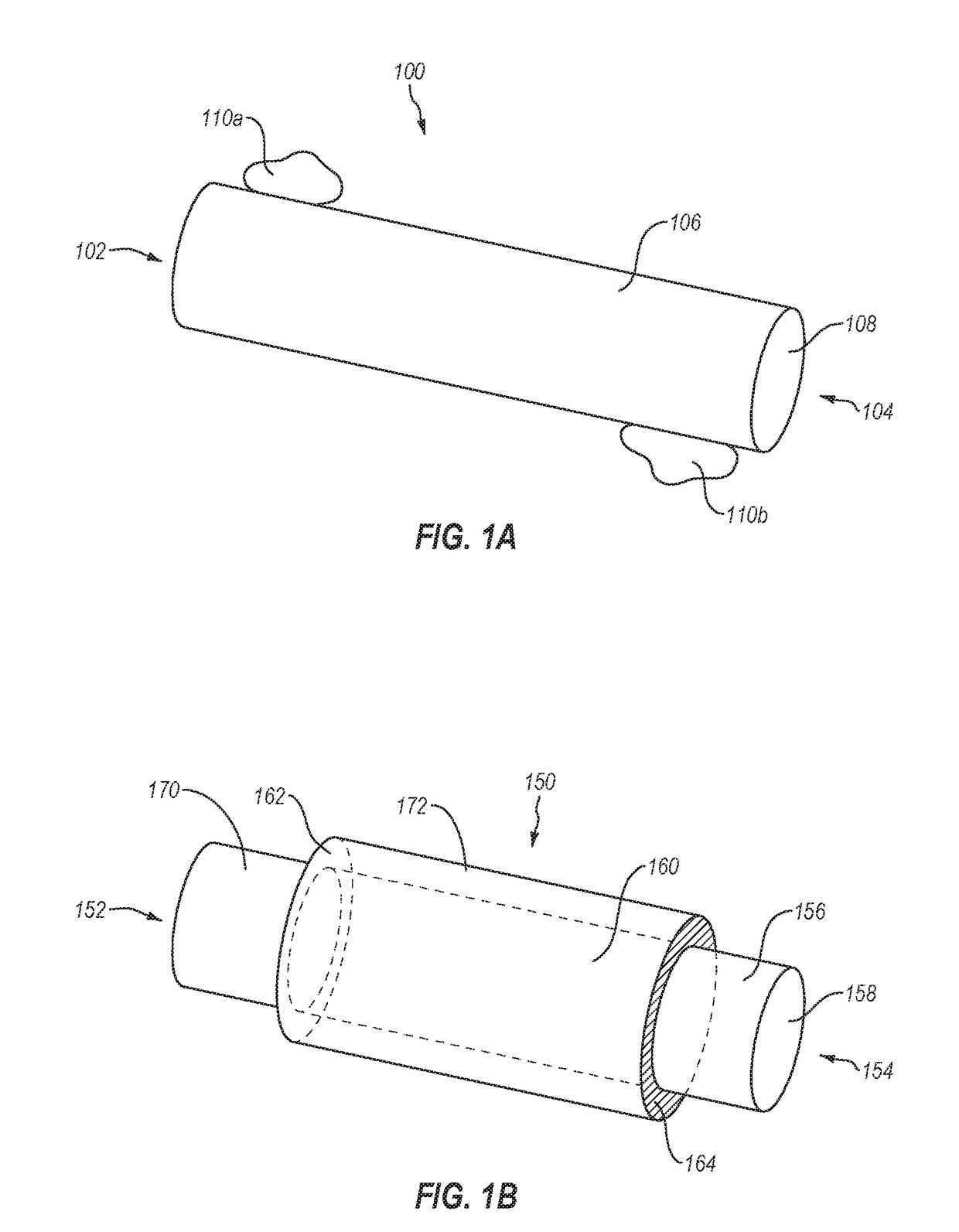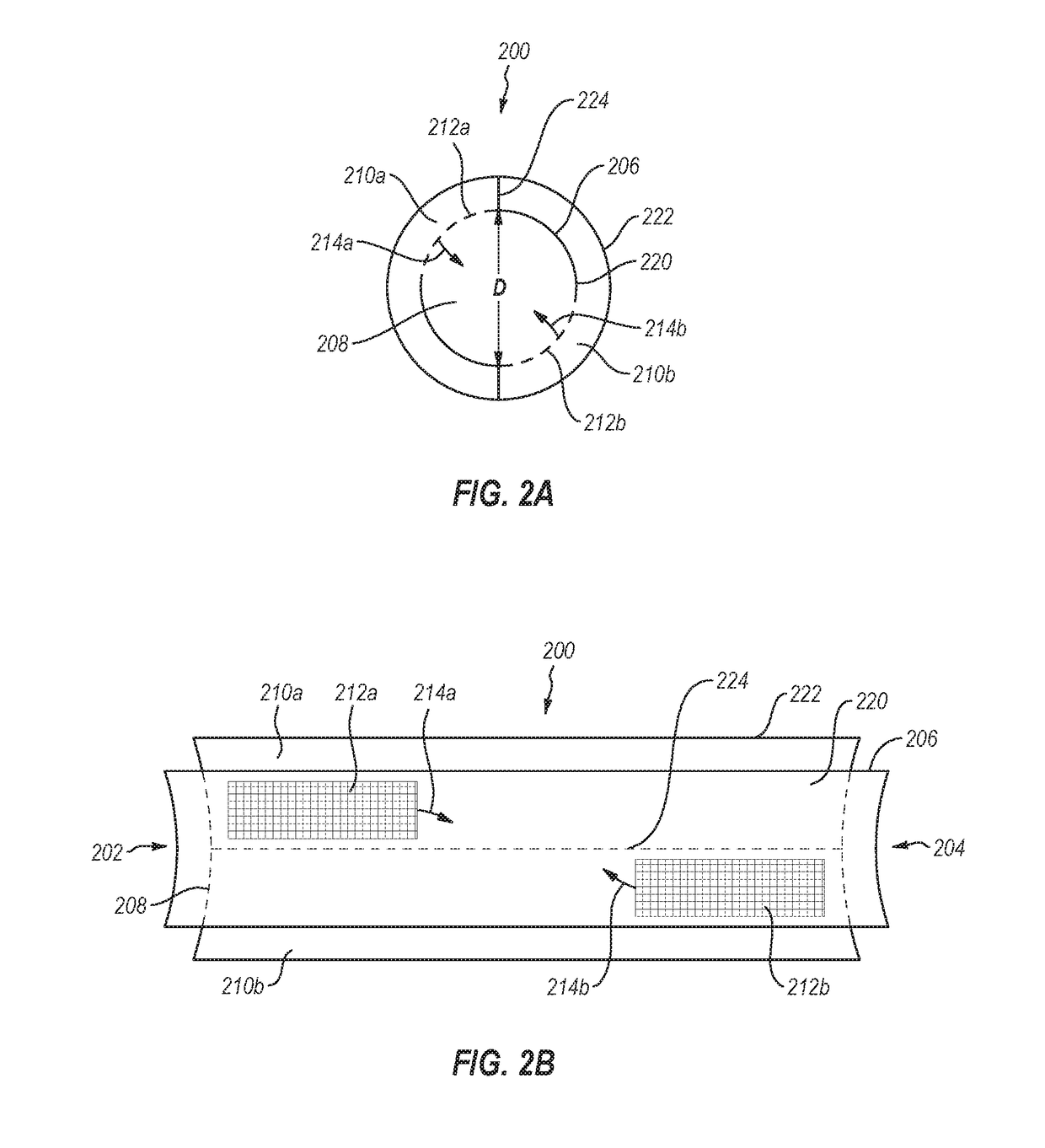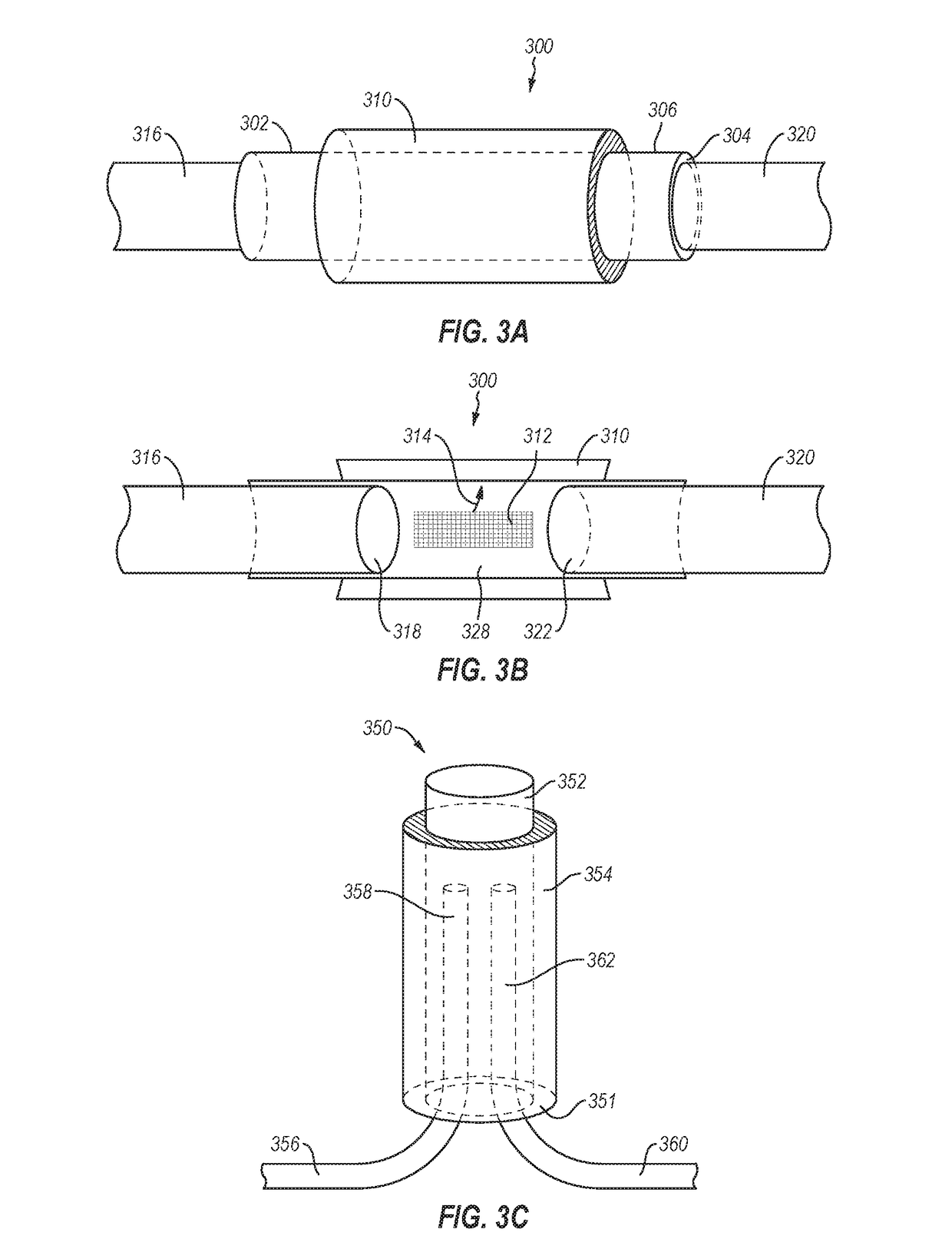Methods and devices for connecting nerves
- Summary
- Abstract
- Description
- Claims
- Application Information
AI Technical Summary
Benefits of technology
Problems solved by technology
Method used
Image
Examples
example 1
Release / Leakage Test
[0075]A 7-day release / leakage test was performed in order to explore the capacity of the PLGA device to deliver drugs of interest. Bovine serum albumin (BSA) was chosen to serve as the drug because its size is bigger than most of the growth factors. Two samples filled with 30 μL 300 mg / mL BSA were tested with two negative controls, two leakage test samples and a positive control, as shown in Table 1.
TABLE 1List of samples involved in the PLGA-BSA release / leakage testProtein in theReceiverSample NamePurposeReservoirReservoirchamberPositive ControlThe maximum possiblen / a42 uL 300 mg / mL7.5 mL PBS(PC) est. conc.conc. in the receiverBSA directly(tween free)1800 ug / mLchamber.injected into the*Note: useUse design's dimension:PBS7 mL Ambermax 42 uL drug reservoirGlass Vialvolume.Leakage Test 1To test if no BSA is#130 uL 300 mg / ml7.5 mL PBS(LT1)detected when using aBSAdevice filled with BSAand without window &filter.Leakage Test 1Duplicate LT1#230 uL 300 mg / ml7.5 mL PBS(L...
example 2
Placement of PLGA Repair Conduits
[0080]PLGA conduits with drug reservoirs were used to repair transected nerves in an end-to-end and a side-to-side fashion in a mouse sciatic nerve model in order to determine whether biodegradation of PLGA causes an adverse reaction. Walking track analysis was performed every two weeks until animals were sacrificed at day 90. It was found that long-term placement of PLGA conduits and biodegradation of PLGA produced no adverse reaction. In general, side-to-side repair seemed to show some advantages, but side-to-side repair is not always an option if there is a nerve gap. However, it is expected that all repair outcomes (e.g., side-to-side, end-to-end, side-to-end, etc.) can be improved with the drug-delivering conduits described herein.
example 3
[0081]The drug delivery conduits described herein are tested in a mouse sciatic nerve model. NGF and GDNF are two of many growth factors implicated in improved peripheral nerve regeneration and are the test drugs for these experiments as they have been shown to enhance nerve growth both in vitro and in vivo. The mouse sciatic nerve has been established as a viable model for evaluation of peripheral nerve injury because of its easy accessibility and reasonable size for testing. It is hypothesized that the novel strategy described herein will provide results superior to nerve conduit alone (without drug) and will approach the results of autologous nerve graft. The device is used in combination with an autologous nerve graft and it is hypothesized that this combination will provide superior results to autologous nerve graft alone.
[0082]Experimental design: This efficacy study utilizes a mouse sciatic nerve gap (10 mm) model using transgenic mice that express GFP (green fl...
PUM
| Property | Measurement | Unit |
|---|---|---|
| Fraction | aaaaa | aaaaa |
| Fraction | aaaaa | aaaaa |
| Fraction | aaaaa | aaaaa |
Abstract
Description
Claims
Application Information
 Login to View More
Login to View More - R&D
- Intellectual Property
- Life Sciences
- Materials
- Tech Scout
- Unparalleled Data Quality
- Higher Quality Content
- 60% Fewer Hallucinations
Browse by: Latest US Patents, China's latest patents, Technical Efficacy Thesaurus, Application Domain, Technology Topic, Popular Technical Reports.
© 2025 PatSnap. All rights reserved.Legal|Privacy policy|Modern Slavery Act Transparency Statement|Sitemap|About US| Contact US: help@patsnap.com



